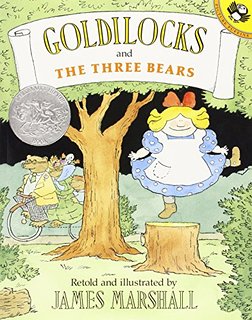
Finding the Math in Storybooks for Young Children
By Herbert P. Ginsburg
Reading is an opportunity for you to learn about your child's world. Young children (roughly ages 2-6) are often described as egocentric. They see the world from a limited perspective. But adults can be equally egocentric. They often do not understand what the world looks like from a child's point of view. As you read with - and not just to - your child, you may learn that she interprets events differently from you, that she sees things in the story that you did not, and that she learns from the story in ways you did not expect. Reading with can provide a window into your child's mind as well as clues to nurturing her thinking.
It is important for you to read storybooks that have math learning as their primary goal. Counting books and shape books are of this type. Of course, goals are different from quality. "Anno's Counting Book" uses beautiful illustrations to pose the challenge of finding different numbers of objects. Other counting books are conventional and tedious.
Another type of storybook does not aim to teach math explicitly, but contains important mathematical ideas embedded within the story. Goldilocks sees that the Baby Bear's bed is the smallest, and that Mama's bed is bigger than Baby's but smaller than Papa's. Also, Baby Bear is smaller than Mama, who is in turn smaller than Papa. The beds are in increasing order of size, and so are the bears. The order is more complex than it initially appears: Mama is both bigger than Baby Bear and smaller than Papa Bear. Also, there is a simple correlation between the size of the bears and the size of the beds: the bigger the bear, the bigger the bed.
So, the story of Goldilocks and the Three Bears contains some fundamentally important math ideas, some of which children find difficult, about relative size, order and the relations between two sequences.
When reading books, it's important to realize that math is a broad subject. Clearly, a counting book or a shape book describing circles and squares are both explicitly about math, in the sense of the kind of formal math we usually learn in school. Although not explicitly about school math, Goldilocks entails relatively complex math ideas- order and correlation. Other storybooks deal in an informal way with patterns, spatial relations, measurement, addition and subtraction, and division - all of which are "math." Indeed, it would be hard to find a non-math storybook that does not include everyday math in this broad sense. In fact, ordinary storybooks may contain more interesting math than do explicit math storybooks (and textbooks, too!).
This in turn raises the question of the type of math you want your child to learn - school math or embedded math? The answer is both. Children need to memorize the counting words, but also need to know that their order specifies relative magnitude. They need to memorize 1, 2, 3, 4, but also need to know that 3 is a bigger number than 2 because it comes after 2, but it is also a smaller number than 4, because it comes after 3. Memorizing symbols is not enough, just as knowing the everyday story is not enough. Eventually, the child needs to know how the informal ideas provide the meaningful basis for the formal math.
Given all this, how can you read storybooks in such a way as to promote your child's math learning?
Some do's:
- Read books that you both find interesting, amusing and full of wonder, books that will grow the child's budding love of reading. Bypass boring stories, even if you think they are "educational." Enjoy the story!
- Talk with your child about the various ideas, including the math ideas. "Who is bigger, Mama Bear or Papa Bear? How do you know? Which bear gets the biggest bed? Why?"
- Use math language to describe and explain ("This is a square because it has four sides and they are all the same length.") and encourage the child to put her ideas into words.
- Keep the child engaged in the book, for example, by asking her to point out certain things on a page. "Show me the biggest bear." Or you can make the questions very open-ended by asking, "What do you see on this page? What is happening?"
- Think about your own experiences with math and whether you might unintentionally transmit any negative feelings about math to the child.
In the end, reading math storybooks and storybooks with embedded math can stimulate your child's thinking, language and enjoyment. Reading can involve you and the child in an intellectual adventure in exploring mathematical ideas. Reading can help you bond with the child. Reading can provide a warm blanket for the child's mathematical knowledge and provide insights into the child's mind.
If you do it well, reading math storybooks can set the stage for meaningful math achievement in school during the years to come.
---------------------------------------
Herbert P. Ginsburg, Ph.D., is the Jacob H. Schiff professor of psychology and education at Teachers College, Columbia University. He has drawn on cognitive developmental psychology to develop a mathematics curriculum (Big Math for Little Kids), storybooks for young children and tests of mathematical thinking.